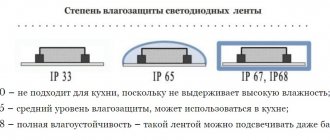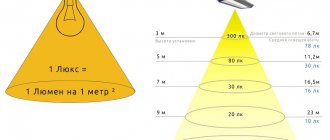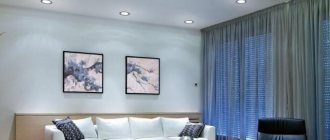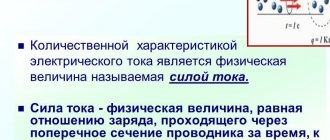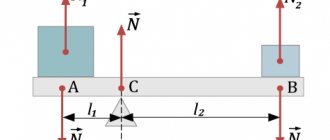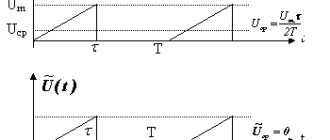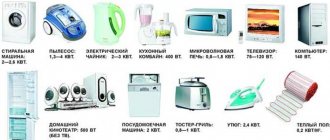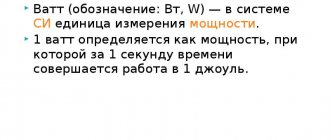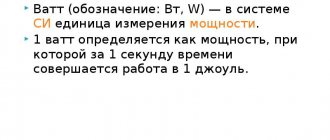General information
Luminous intensity is the power of the luminous flux within a certain solid angle. That is, the intensity of light does not determine all the light in space, but only the light emitted in a certain direction. Depending on the light source, the luminous intensity decreases or increases as the solid angle changes, although sometimes this value is the same for any angle if the source distributes the light evenly. Luminous intensity is a physical property of light. In this way, it differs from brightness, since in many cases, when they talk about brightness, they mean a subjective sensation, and not a physical quantity. Also, brightness does not depend on the solid angle, but is perceived in the general space. The same source with a constant luminous intensity can be perceived by people as light of different brightness, since this perception depends on environmental conditions and on the individual perception of each person. Also, the brightness of two sources with the same luminous intensity may be perceived differently, especially if one produces diffuse light and the other directed light. In this case, the directional source will appear brighter, even though the luminous intensity of both sources is the same.
Luminous intensity is considered as a unit of power, although it differs from the usual concept of power in that it depends not only on the energy emitted by the light source, but also on the wavelength of the light. The sensitivity of people to light depends on the wavelength and is expressed by the function of relative spectral luminous efficiency. The luminous intensity depends on the luminous efficiency, which reaches a maximum for light with a wavelength of 550 nanometers. This is green. The eye is less sensitive to light of longer or shorter wavelengths.
The luminous intensity of one candle is approximately equal to one candela
In the SI system, luminous intensity is measured in candelas
(kd).
One candela is approximately equal to the intensity of light emitted by one candle. the candle
(or international candle), is sometimes also used One candle is approximately equal to one candela.
Luminous intensity diagram
If you measure the luminous intensity using a plane that shows the spread of light, as in the illustration, you can see that the magnitude of the luminous intensity depends on the direction towards the light source. For example, if the direction of maximum emission of an LED lamp is taken to be 0°, then the measured luminous intensity in the 180° direction will be much lower than for 0°. For diffuse sources, the luminous intensity for 0° and 180° will not be much different, and may be the same.
In the illustration, light emitted by two sources, red and yellow, covers an equal area. Yellow light is diffused, like candle light. Its strength is approximately 100 cd, regardless of direction. Red is the opposite, directional. In the direction of 0°, where the radiation is maximum, its strength is 225 cd, but this value quickly decreases with deviations from 0°. For example, the luminous intensity is 125 cd when directed at a source of 30° and only 50 cd when directed at 80°.
Luminous flux of lamps (lm)
big LED-high, big LED-med, big LED-low, 5 MM - High, 5 MM - medium, 5 MM - low
| Black Diamond Lantern (BD) | Luminous flux, (lm) |
| Icon | 200 |
| Spot new | 200 |
| Cosmo new | 90 |
| Wiz new | 30 |
| Ion | 80 |
| Ember Power Light | 150 |
| Orbit Lantern | 105 |
| Voyager Lantern | 140 |
| Petzl flashlight | Luminous flux (lm) |
| Tikka XP | 180 |
| MYO XP | 140 |
All Black Diamond flashlights
The power of light in museums
Museum staff measure the light intensity in museum spaces to determine the optimal conditions for visitors to view the works on display, while at the same time providing gentle light that causes as little damage as possible to museum exhibits. Museum exhibits containing cellulose and dyes, especially those made from natural materials, deteriorate from prolonged exposure to light. Cellulose provides strength to fabric, paper and wood products; Often in museums there are many exhibits made from these materials, so the light in the exhibition halls poses a great danger. The stronger the light intensity, the more museum exhibits deteriorate. In addition to destruction, light also discolors or yellows cellulose-containing materials such as paper and fabrics. Sometimes the paper or canvas on which the paintings are painted deteriorates and breaks down faster than the paint. This is especially problematic since the paint on a painting is easier to restore than the base.
Paris, Versailles
The damage caused to museum exhibits depends on the wavelength of light. For example, light in the orange spectrum is the least harmful, and blue light is the most dangerous. That is, light with longer wavelengths is safer than light with shorter wavelengths. Many museums use this information and control not only the total amount of light, but also limit blue light using light orange filters. At the same time, they try to choose filters that are so light that, although they filter out blue light, they allow visitors to fully enjoy the works exhibited in the exhibition hall.
It is important not to forget that exhibits deteriorate not only from light. Therefore, it is difficult to predict, based only on the intensity of light, how quickly the materials from which they are made will degrade. Long-term storage in museum spaces requires not only low lighting, but also low humidity and low oxygen levels, at least within display cases.
Sign prohibiting flash photography
In museums where flash photography is prohibited, they often refer specifically to the harm of light to museum exhibits, especially ultraviolet light. This is practically unfounded. Just as limiting the entire spectrum of visible light is much less effective than limiting blue light, banning flash has little effect on the extent of light damage to exhibits. During the experiments, the researchers noticed slight damage to the watercolors caused by professional studio flash only after more than a million flashes. A flash every four seconds at a distance of 120 centimeters from the exhibit is almost equivalent to the light that is usually found in exhibition halls, where the amount of light is controlled and blue light is filtered. Those who take photographs in museums rarely use such powerful flashes, since most visitors are not professional photographers and take photos with phones and compact cameras. Flashes in the halls rarely work every four seconds. The damage from the ultraviolet rays emitted by the flash is also in most cases small.
Where this knowledge may be needed
Many people like to solve crosswords and scanwords. The authors who come up with scanwords use unique terminology and increasingly want to confuse the reader. You need to try hard to figure out the exact answer. Do you think why you might need to know the unit of brightness? The scanword may well contain a similar question.
For example, this case. You need to solve the word from the crossword puzzle: EXCELLENT ACHIEVEMENT. To make it easier to guess this word, there is a hint - this is a unit of brightness of a luminous surface, the word itself consists of 3 letters. Using these clues you can easily determine what the word is. Answer to the crossword clue: NIT.
Luminous intensity of lamps
The properties of lamps are usually described using luminous intensity, which differs from the luminous flux - a value that determines the total amount of light and shows how bright this source is in general. It is convenient to use luminous intensity to determine the luminous properties of lamps, for example, LED lamps. When purchasing them, information about the light intensity helps determine with what strength and in what direction the light will spread, and whether such a lamp is suitable for the buyer.
Light intensity distribution diagram
Light intensity distribution
In addition to the luminous intensity itself, luminous intensity distribution curves help to understand how the lamp will behave. Such diagrams of the angular distribution of light intensity are closed curves on a plane or in space, depending on the symmetry of the lamp. They cover the entire range of light propagation of this lamp. The diagram shows the magnitude of the light intensity depending on the direction of its measurement. The graph is usually plotted in either a polar or rectangular coordinate system, depending on the light source for which the graph is being plotted. It is often placed on lamp packaging to help the buyer imagine how the lamp will perform. This information is important for designers and lighting engineers, especially those who work in the field of cinema, theater, and the organization of exhibitions and performances. Luminous intensity distribution also affects driving safety, which is why engineers designing vehicle lighting use luminous intensity distribution curves. They must comply with strict regulations governing the distribution of light intensity in headlights to ensure maximum safety on the roads.
The example in the figure is in the polar coordinate system. A is the center of the light source, from where the light spreads in different directions, B is the luminous intensity in candelas, and C is the angle of measurement of the direction of the light, with 0° being the direction of the maximum luminous intensity of the source.
Measuring the intensity and distribution of light intensity
Light intensity and its distribution are measured with special devices, goniophotometers
and
goniometers
. There are several types of these devices, for example with a movable mirror, which allows you to measure light intensity from different angles. Sometimes, instead of a mirror, the light source itself moves. Typically these devices are large, with a distance of up to 25 meters between the lamp and the sensor that measures light intensity. Some devices consist of a sphere with a measuring device, a mirror and a lamp inside. Not all goniophotometers are large; there are also small ones that move around the light source during measurement. When purchasing a goniophotometer, the decisive factors, among other factors, are its price, size, power, and the maximum size of the light source that it can measure.
Half Brightness Angle
Luminous intensity, half brightness angle
Half-brightness angle, sometimes also called glow angle, is one of the quantities that helps describe a light source. This angle indicates how directional or diffuse the light source is. It is defined as the angle of the light cone at which the luminous intensity of the source is equal to half its maximum intensity. In the example in the figure, the maximum luminous intensity of the source is 200 cd. Let's try to determine the half-brightness angle using this graph. Half the luminous intensity of the source is 100 cd. The angle at which the luminous intensity of the beam reaches 100 cd., that is, the angle of half brightness, is equal to 60 + 60 = 120 ° on the graph (half the angle is depicted in yellow). For two light sources with the same total amount of light, a narrower half-brightness angle means that its luminous intensity is greater, compared to the second source, for angles between 0° and the half-brightness angle. That is, directional sources have a narrower half-brightness angle.
Liquid Image diving mask with attached underwater lights
There are advantages to both wide and narrow half-bright angles, and which one you should prefer depends on the application of the light source. For example, for scuba diving, you should choose a flashlight with a narrow angle of half brightness if there is good visibility in the water. If visibility is poor, then there is no point in using such a flashlight, since it only wastes energy. In this case, a flashlight with a wide angle of half brightness, which diffuses the light well, is a better choice. Also, such a flashlight will help during photo and video shooting, because it illuminates a wider area in front of the camera. Some dive lights can be manually adjusted to half brightness, which is useful since divers can't always predict what the visibility will be like where they're diving.
Residential lighting standards
And if it’s not enough, then in just a few years you can seriously improve your vision. To make high-quality lighting, it is necessary to take into account the lighting standards for residential premises in Watts, then there will be no problems. In this article, we decided to tell you what kind of lighting should be in residential premises.
Lighting standards for residential premises according to SNiP
Initially, we will remember about the main SNiP document, where you can find all the basic norms and rules, according to which lighting in the room should be done. Of course, not all people trust such rules, but we must not forget that no one could come up with anything better now, so you can safely build on these parameters when arranging your own home.
In the meantime, let’s look at what standards for indoor lighting in the house currently exist?
Children's room - 200. If we are talking about a swimming pool or bathhouse, then here it is 100. In the corridors it is enough. For toilets, showers and baths, 50 is enough
However, please note that this may not be enough for a bathroom. For example, if you need to shave or put on makeup, you need good light
Therefore, adding another 100 Lux will not be superfluous. Basement and attic passages 20. Dressing rooms 75. If you have a room where you read, play billiards and just sit at the computer, then the optimal lighting in this case is 300 Lux.
Also look at the table where you can discover other lighting standards.
So, 1 Lux is 1 lumen per square meter. As you can see, everything is extremely simple.
Calculating the optimal lighting in the room
Carrying out the correct calculations is quite simple; there are no special requirements. We will tell you the calculation methods in detail. Let's imagine that we have a bedroom of 20 m2. Next, look at the table, for bedrooms you need lighting of 150 Lux. To convert all this into lumens, we multiply 150 by 20. As a result, we get 3000 Lumens.
There is also now a special device that allows you to determine lighting standards. However, there is no point in purchasing it, because its price is kept at a high level.
Exposure number
Exposure number
(English Exposure Value, EV) is an integer characterizing possible combinations of
shutter speed
and
aperture
in a photo, film or video camera. All combinations of shutter speed and aperture that expose the same amount of light to the film or sensor have the same exposure number.
Several combinations of shutter speed and aperture in the camera at the same exposure number allow you to obtain an image of approximately the same density. However, the images will be different. This is due to the fact that at different aperture values, the depth of the imaged space will be different; at different shutter speeds, the image will remain on the film or matrix for different times, as a result of which it will be blurred to varying degrees or not blurred at all. For example, the combinations f/22 - 1/30 and f/2.8 - 1/2000 are characterized by the same exposure number, but the first image will have a large depth of field and may be blurry, and the second will have a shallow depth of field and, quite possibly , will not be blurry at all.
Higher EV values are used when the subject is better lit. For example, an exposure value (at ISO 100) of EV100 = 13 can be used when shooting landscapes if the sky is cloudy, and EV100 = –4 is suitable for shooting bright aurora.
A-priory,
EV = log2( N
2 /
t
)
2 EV = N
2 /
t
, (1)
- Where
- N
- aperture number (for example: 2; 2.8; 4; 5.6, etc.) - t
- shutter speed in seconds (for example: 30, 4, 2, 1, 1/2, 1/4, 1/30, 1/100, etc.)
For example, for a combination of f/2 and 1/30, the exposure number
EV = log 2 (2 2 /(1/30)) = log 2 (2 2 × 30) = 6.9 ≈ 7.
This number can be used to shoot night scenes and illuminated storefronts. Combining f/5.6 with a shutter speed of 1/250 gives the exposure number
EV = log 2 (5.6 2 /(1/250)) = log 2 (5.6 2 × 250) = log 2 (7840) = 12.93 ≈ 13,
which can be used to shoot a landscape with a cloudy sky and no shadows.
It should be noted that the argument of the logarithmic function must be dimensionless. In determining the exposure number EV, the dimension of the denominator in formula (1) is ignored and only the numerical value of the shutter speed in seconds is used.
Lumen values for different lighting fixtures
Modern requirements for the packaging of lighting devices require that their technical characteristics be communicated to the consumer in full. Therefore, finding the value in lumens under the abbreviation “lm” or “lm” will be easy. For example:
- incandescent lamp 100 W - 1300-1500 lm;
- incandescent lamp 60 W "General Electric" - 660 lm;
- energy-saving lamp "NetHaus", halogen 13 W - 250 lm;
- LED lamp “Gauss Elementary” 12 W “as at 100 W” - 1130 lm;
- LED lamp “Gauss Elementary” 6 W “as at 60 W” - 420 lm;
- LED lamp Elektrostandard LTB0201D 60 cm 18V - 1200 lm;
- LED table lamp Maytoni Nastro, 15 W - 900 lm;
- office lamp TL-ECO with LEDs 48.5 W - 4530 lm (total luminous flux after all losses).
As can be seen from the ratio of luminous flux to device power, LED lighting devices are the most economical and efficient in luminous output.
